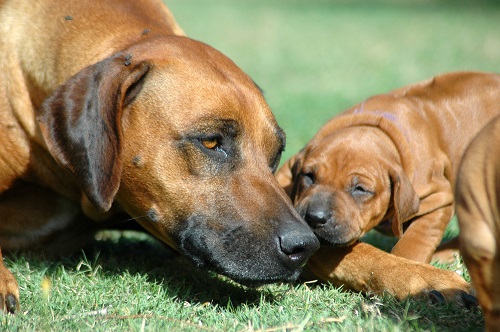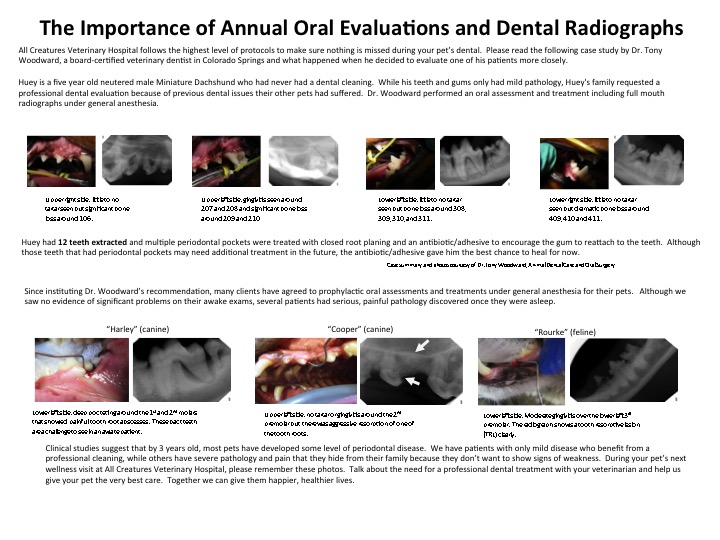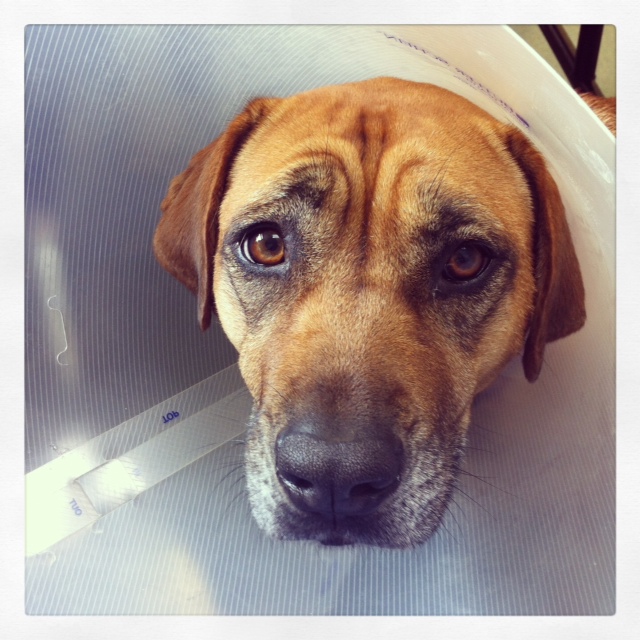Tips For Dog Health

Good dog health begins at the very start, and properly caring for a puppy will result in a happy, healthy adult dog! Consider the following tips to ensure your dog’s health throughout his or her entire life.
- Make sure to schedule your puppy for a physical examination with a veterinarian as soon as possible. A sick puppy, even if it is minor, will not adjust to a new home as well as a healthy puppy.
- Puppies require frequent veterinary care in the first few months of life as well as yearly and bi-yearly visits thereafter. They need examinations, parasite screening and vaccinations at 8, 12, 16, and sometimes at 20 weeks of age.
- Puppies are babies even at more than 4 months of age and are still growing. Be sure to provide them with plenty of areas to rest such as quiet time in a crate, exercise pen or a baby-gated area. Having these areas helps them to become comfortable being alone and become adjusted to not receiving constant attention.
- We strongly advise crate training for your new puppy. Your new dog should be exposed to three new people and three new vaccinated friendly dogs each day. Make sure that time in the crate is a positive experience, giving your puppy plenty of toys or treats. Put the crate in a location where your puppy can see and hear people. If your puppy starts to whine or bark while in the crate, make sure you wait until they are quiet before approaching. Giving your puppy attention while they are doing a negative behavior will actually reinforce the negative behavior.
- Don’t forget about your other pets in your home! With a new puppy, make sure that your other pets are still receiving the same level of attention they had before the puppy arrived.
- Training and socialization are extremely important for your new puppy. We strongly recommend puppy-training classes during the first 8-16 weeks of age. Positive reinforcement training provides a common language that bridges the communication gap between you and your puppy.
- To keep your puppy safe, always keep them on a leash. Keep in mind that even well-trained dogs can run off after squirrels, other dogs, or people.
- We strongly recommend having your new puppy microchipped. The microchip will allow them to be identified at other veterinary hospitals, pounds, or shelters if they are ever lost or stolen. For more information about microchips, visit: www.homeagain.com
- Regular walks at least twice daily will provide your puppy with great exercise and may also help with their behavior. We recommend using a harness and a non-extendable leash to keep your new puppy safe.
- Don’t underestimate the importance of brushing your puppy’s teeth! Getting your puppy used to tooth brushing will allow them to be comfortable with it as they get older.
Puppy Standards of Care
| 8 weeks | 12 weeks | 14 weeks | 16 weeks | 18-20 weeks | 6 months | 7 months |
| Physical Exam | Physical Exam | Technician Appointment | Physical Exam | Physical Exam | Spay/Neuter | Heartworm Test |
| Distemper #1 (DHPP) | Rabies | Leptospirosis #2 | Distemper #3 (DHPP) | Distemper #4 (DHPP) | Deciduous Teeth Check | Heartworm, Flea & Tick Prevention |
| Bordetella (Kennel Cough Vaccine) | Distemper #2 (DHPP) | Lyme #2 | Dewormer | Dewormer | Microchip (if needed) | N/A |
| Intestinal Parasite Screen | Leptospirosis #1 | Dewormer | Heartworm, Flea & Tick Prevention | Pre-op Lab Work | N/A | N/A |
| Dewormer | Lyme #1 | N/A | Microchip | N/A | N/A | N/A |
| Heartworm, Flea & Tick Prevention | Dewormer | N/A | N/A | N/A | N/A | N/A |
| Begin Dental Care | Heartworm, Flea & Tick Prevention | N/A | N/A | N/A | N/A | N/A |
Adult Dog Standards of Care
| Annual Visit | Semi-Annual Visit |
| Physical Exam | Physical Exam |
| Dental Disease Evaluation | Dental Disease Evaluation |
| Blood Parasite Test | Junior Early Detection Lab Work |
| Intestinal Parasite Screen | Parasite Prevention |
| Vaccinations as Recommended | N/A |
| Parasite Prevention | N/A |
Senior Dog Standards of Care
| Annual Visit | Semi-Annual Visit |
| Senior Wellness Physical Exam | Senior Wellness Physical Exam |
| Dental Disease Evaluation | Dental Disease Evaluation |
| Osteoarthritis Screening | Osteoarthritis Screening |
| Blood Parasite Test | Senior Early Detection Lab Work (including urine) |
| Intestinal Parasite Screen | Blood Pressure Screen |
| Vaccinations as Recommended | Glaucoma Screen |
| Parasite Prevention | Parasite Prevention (if needed) |
Dogs need Dental Care Too!

Watch this great how-to video on learning how to brush your dog’s teeth!

How to Prevent and Stop Dog Fights
Have you ever thought you were taking your pup out for a relaxing walk and end up with your dog exchanging a growl and snap of the teeth with another leashed dog? It happens a lot and it is wonderful news that usually these interactions do not turn into a real dogfight.
Whether on or off leash, it is normal dog behavior to correct another dog if that dog is invading its “space” around the back of the neck head or face with a warning growl or snap. Sometimes a puncture wound may occur.
We now know that dogs and wolves do not have alpha males that lead the pack and dominate the other members. There is no such thing. The dogs in the lead are usually the pack elders or parents. They are simply followed by the younger pups and aggression is not part of the equation. Read the book Dog Sense by John Bradshaw if you are interested in the latest thoughts on dog behavior.
One of the best ways to avoid fights is to manage dogs’ behavior and interaction times either in your household or when out on a walk. Kathy Diamond Davis, a dog trainer, gives us a number of helpful dog management hints on Veterinary Information Network.
In a social setting, the dog handlers must cooperate. Never let your dog try to draw another dog into interaction unless that dog’s owner agrees to it first. Management starts with puppy experiences. Being frightened by other dogs as a puppy can set the little one up for fighting later. A pup’s instincts for proper dog social behavior are not ready until at least four months of age for the pup to be left alone with an adult dog. That’s a minimum—some cannot be safely left together until later, or ever.
A lot of serious fights have happened when a relative or friend was left in charge of the dogs. Dog people may not be aware of the handling they just naturally do that helps prevent fights, such as how you administer treats and even how you come in the door. Boarding both the dogs in separate runs is another option.
Other changes in the home that can trigger fighting between same-sex dogs include:
- Adding a dog to the family.
- A female dog in the household—or even a neighbor dog—going into heat.
- A dog leaving or returning from illness, dog show, etc.
- The death of a dog.
- A dog becoming ill, injured, or impaired by age.
Dog play serves the purpose of helping them work out their relationships with less or no fighting. If they can run together and push and shove each other, they demonstrate who is faster and stronger and bolder without violence. Space greatly helps this process, though spaces that are too large can increase the risk of injuries such as torn ligaments.
Fights and injuries become more likely when dogs get tired, so avoid over long play sessions. Playing on ice or snow also increases these risks.
Close confinement together can make the dogs more likely to fight. Work with them as they pass through doorways and other small spaces to keep their attention off each other.
Use routines and structured activities that let the dogs know you do have time and resources for all of them. Give each of them separate times with you away from the house and away from the other dogs, on a schedule so that they realize each gets a turn.
How to Stop a Dog Fight
Punishment escalates fights and teaches the dogs nothing at all. So don’t punish either dog. Hitting or even yelling while dogs are fighting (or just fussing) can escalate it. Sometimes the best thing to do is step back, stay quiet, and wait. If it’s over in 10 seconds with no injuries, that’s a fuss, not a fight. There may be a lot of hope for remedial training.
Keep your hands off fighting dogs. Grabbing them is how people get bitten. Perhaps you are willing to take that risk for yourself in order to protect the dogs. But it’s worse for the dogs if you get bitten, too!
Rather than using your body, separate fighting dogs with physical barriers. Different things work for different dogs. Some things to try include:
- Water spray from a hose—or maybe drop the hose between them. 2. Slam a door or make another noise as loud as you can. Try not to break the door.
- Get a closed door between the dogs (a good reason not to break the door when you slam it).
- Pop open a large, automatic umbrella and get it between them.
- Block them from each other with a folding chair or anything else you can use without getting your body between them.
- Spray them with whatever your veterinarian recommends for the purpose. A large bottle of soda shaken may do the trick if a hose does not.
- Get a fence between the dogs, or get at least one of them into a crate or dog exercise pen.
- If you know how and have help, you might need to pry the jaws of a clamped-on dog open. A sturdy wooden stick on each side may make it possible to do this without injuring the dog. In one case, the people separating the dog’s jaws from a smaller dog broke a broomstick and used the two halves.
Sometimes the aggressor is treating your dog as prey and comes out of the blue with no warning. I have used and witnessed the following technique several times. Stop the aggressor by holding a hind foot in each hand and pull him away. Usually, the dog is so stunned that his back feet are off the ground his jaws will relax and you can grab a leash and get them separated. Never get your hands in between their heads or you will receive crippling bite wounds.
Infection from bite wounds that can look minor is a risk. After any fight, a dog with injury needs to be checked by a veterinarian, even if injuries don’t look serious. With proper handling and training, you can greatly minimize the chances of your dog getting involved in a fight and actually experience those lovely relaxing walks we all desire.
Call All Creatures Veterinary Hospital providing physical examinations for dogs in the Salem and the North Shore areas of Massachusetts today or request an appointment online.








